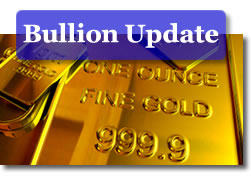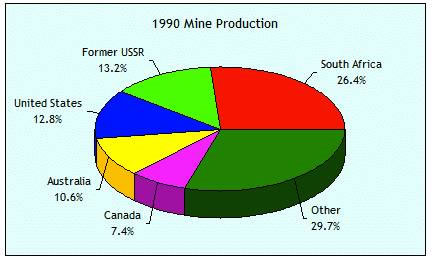 I’ll Have A Slice Of That Pie, Please!
I’ll Have A Slice Of That Pie, Please!
Good Morning,
Gold prices wiped out their weekly gains following an overnight fall in values, to just under $1130 per ounce. The move to lower levels was precipitated by a 0.43 surge in the US dollar and by a lack of bargain-hunting buyers in overseas markets. This was the first real gain in the U.S. Dollar Index in circa six sessions. The greenback gained ground on market speculation that growth in China will hit some potholes this year, in the wake of a potential slowing in local bank lending.
Commodities fell in the wake of the gains exhibited by the US dollar, and gold remained confined within the $1125-$1150 trading channel ahead of pre-weekend book-squaring and the release of US CPI data later this morning. While support has been manifest in a value zone that extends from $1115 to $1130, the yellow metals still requires a convincing break above $1150 and up towards $1170 to avoid disappointment and potential liquidations among latecomers to the party that broke out late on Sunday.
New York bullion trading opened with an $8.50 loss in gold, which was pegged at $1133.00 basis spot bid as against the US dollar at 77.14 on the index and crude oil at $78.84 per barrel (showing a 55-cent loss). Black gold was trading some $4 higher just one week ago. Silver opened at $18.53 per ounce, a fall of 13 cents on the day. Platinum also opened lower, shedding $10 to $1601 per ounce. Palladium continued its ascent, gaining $5 to start the session at $447 per ounce. The advent of the noble metals US ETFs has very obviously dominated the price scene in these metals for the past week.
Speculation (and how to rein it in) in various commodity markets appears to be very much on the mind of regulators in the US, following last year’s headline-making oil bubble. Yesterday, the CFTC proposed hard limits on the number of futures contracts a single investor may hold in oil. Now, comes words that the Chairman of the Commodity Futures Trading Commission is saying that his agency’s planned meeting in early March will discuss possible position limits on metal futures and options contracts and that such discussions will focus on gold and silver contracts.
Surprising? Hardly. What will be the fallout? Who knows at this time? Yesterday, for example, gold futures buying increased in a knee-jerk reaction following the news leak, and such buying was seen as trying to avoid possible future measures by the CFTC to rein in speculation in metals trading, some dealers said. Well, that was yesterday’s reaction, anyway. Much remains unclear about how this will all unfold. The Daily Bell…chimes in with its own take on the matter, and dismisses the perception that gold and silver might continue to fly outside of regulatory radars due to the fact that they are traded around the world:
"So, it comes down to this. The American CFTC which runs gold and silver trading is concerned about “speculative bubbles” and is determined to get ahead of the curve. It may impose limits on how much metal can be purchased, in aggregate, on any given day or even set up a trading band that cannot be breached day-to-day. Who knows? The concern is generated by the meltdown of stock markets and fiat-money driven investing generally is said to have generated the CFTC’s interest in limiting speculation on a variety of commodities. Where the CFTC goes, by the way, others throughout the West, and even Asia, etc., shall likely follow."
In the background, the Fed appears more and more confident that the U.S. economic recovery has some real traction, and that it is moving toward self-sustaining growth and possible job creation. This progress is giving some urgency to the debate about the nature and the timing of the exit strategy from the recent era of record-low interest rates.
Although the shift towards higher interest rates is still being seen as some 10 months away by some market analysts, the focus is already heavy on the March expiration of the end of the Fed’s $1.25 trillion dollars’ worth of mortgage-backed securities purchases. Add to that, the statements that have been made by a couple of Fed Presidents recently:
"Kansas City Fed Bank President Thomas Hoenig said Jan. 11 the central bank should end purchases of mortgage-backed securities because the market is "healing." Philadelphia Fed Bank President Charles Plosser said the next day that the recovery is "sustainable even as the fiscal and monetary stimulus programs eventually wind down." — reports Bloomberg.
The euro fell quite hard this morning, mainly on investor apprehensions that European assets will shed value as Greece struggles to cut its budget deficit and get its financial house in order. The common currency declined the most in almost a month against the dollar. ECB President Trichet warned on Thursday that Greece cannot expect "special treatment" and those words sent the cost of insuring Greek bonds against default to a record. Rumours that German Chancellor Merkel was going to quit her job added to investor malaise this morning, although the floated stories were quickly and strongly dismissed by German officials.
We mentioned yesterday that global gold production managed a not insignificant 6% gain in 2009 –according to GFMS data- and that it rose to 2,553 tonnes for the full year. Much of such notable gains in output (achieved during a time of ‘peak gold!’ chants) are attributable to surging mine output in the transitional economies of China and Russia — to name but two of the most visible suspects. Here is the story on China, as it stands at the moment:
"CCTV: The World Gold Association predicts that global gold production in 2009 exceeded 2500 tons… 3-and-a-half percent higher than 2008. This is the first rise in world gold production in 9 years. China’s 310 tons represent an output jump of over 10 percent year-on-year. The pie charts below, from Goldsheet, show just how quickly China went from being a tiny meaningless gold producer to the world’s fastest growing and largest. Have a (BIGGER) slice of pie, please.
From 0.5% (not even shown) of world production in 1990…

…To 12.2% by 2008.

Something else that is rapidly surging in China is the amount of money in reserves, and the lending being made by local banks. Bloomberg reports that: "China’s foreign-exchange reserves surged to a record level in December and new loans exceeded forecasts, raising the stakes in Premier Wen Jiabao‘s campaign to avert asset-price bubbles. Reserves rose 23 percent to $2.4 trillion – the world’s largest – according to a People’s Bank of China statement on its website today.
Banks extended 379.8 billion yuan ($55.6 billion) of new loans, taking the annual total to an unprecedented 9.59 trillion yuan, the PBOC reported. Money supply as measured by M2 was up 27.7% in December, easing slightly from November’s 29.7% rise, the PBOC’s data showed."
"Liquidity is massive — the government needs to do something about it," said Isaac Meng, senior economist at BNP Paribas SA in Beijing. Accelerating inflation may encourage the government to end the 18-month-old yuan peg to the dollar and allow a 3 percent appreciation by year -end, Meng said."
Hot money. Hot markets. A recipe for potential disaster, when the music (cheap funding) stops. The number of commentators currently calling for caution and envisioning a hard landing in China in coming quarters is growing, despite persistently starry-eyed prognostications to the contrary by the likes of Jim Rogers. And even he admits that China’s growth (if one can call it that) needs a bit of a cool-down time.
Gold is likely to be hit a bit further today as the dollar extends its gains slightly versus the euro and other major currencies following U.S. government reports that the consumer price index rose 0.1% in December, a slower pace than analysts had expected. Bargain hunting and book-squaring might limit the damage, but the euphoria that was manifest at the start of the week is now showing signs of waning.
BEFORE YOU HEAD BACK TO YOUR HOMES AND FAMILIES FOR THE WEEKEND, WE URGE YOU TO PLEASE CONSIDER GIVING TO THE VICTIMS OF THE TRAGIC QUAKE IN HAITI. PLEASE VISIT THE LINK ON THE KITCO HOMEPAGE:http://www.kitco.com/reports/Kitco_Cares.html
AND GIVE. ANYTHING. A DOLLAR. FIVE. MORE. IT ALL HELPS. SOMETIMES, GIVING MONEY IS FAR MORE CRITICAL THAN TRYING TO MAKE MORE OF IT. THIS IS ONE OF THOSE TIMES.
Happy Trading and a Happy Weekend,
Jon Nadler
Senior Analyst
Kitco Metals Inc.
North America
Blog: http://www.kitco.com/ind/index.html#nadler
Check out other site market resources at Bullion Prices, Silver Coins Values and the US Inflation Calculator which easily finds how the buying power of the dollar has changed from 1913-2009.










